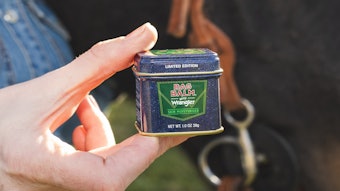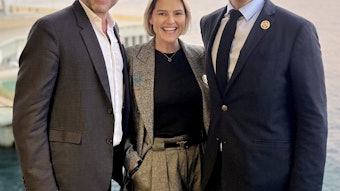Attending the Natural Beauty Summit (NBS), put together by Beyond Beauty, and the Les Journées Jean-Paul Marty: Actualités et futur/Phytomolécules actives de l’origine à l’usage, organized by the Société Française de Cosmétologie (SFC), both taking place in December 2009 in Paris, I looked further into the convergence and notoriously different treatments done to naturals in the U.S. and the EU. There was much information on the regulatory area, and it appeared the supply side was getting more fine-tuned to the increasing consumer demand for traceability, ethical trade, sustainability and quality.
Differences
The regulatory differences between the EU and the U.S. were striking. There has always been a gap between the U.S. market and the European one in the way each approaches naturals, and this is mostly due to very deep-rooted cultural differences, both at the trade level and the consumer level. But, beyond basic differences, the EU lately has taken extensive steps to try and regulate naturals. It has also initiated REACH which, though it was intended for chemicals, affects all new ingredients of non-polymeric nature, including naturals. Consumers and NGOs have driven a lot of the regulatory shifts instituted these last few years, with suppliers and brands following suit.
Though not yet unified at the European level, a forest of norms, quality labels and certifications has been adopted by European suppliers, brands and consumers. The “bio” certification, which equates to an “organic” certification, actually exists in its own right for cosmetics and skin care products in a way that makes it not necessarily easy to comply with, but feasible.
Driving the development
From a distribution and marketing standpoint, those who have really driven the European naturals market have been the distributors themselves, coming up with their own “organics” lines long before mainstream brands actually decided to follow. For the most part, however, larger brands didn’t take notice when the market started getting more demanding in terms of naturals.
Michel Gutsatz, a consultant specializing in branding who is based in Paris but with a good knowledge of the U.S. market and who also spoke at NBS, points out the differences, saying, ”The distributors in Europe have really set the pace in term of organics. The brands have followed and definitely missed a beat on this one. They only took notice when the distributors’ brands started to experience a growth that was scary for them. In the U.S., because there is no organic label truly designed for beauty, there have been a lot of more or less serious natural brands, with a number of lawsuits pertaining to the claims they were making. Then they were a couple of major players, such as Aveda and Origins, and finally a myriad of niche brands, none of which really grows in a significant manner.”
For Gutsatz, the naturals market in Europe is really segmented in three categories. At one end of the spectrum are the large groups’ pseudo-naturals, which include “natural” ingredients, but aren’t pushing the exercise too far. On the other end of the spectrum are labelized, sophisticated, beautiful brands that are very stringent on the organics rules. And in the middle are brands with a natural-dominant bent that don’t have the organic certification. These brands use ingredients, such as synthetic fragrances or sometimes parabens, and make no excuse for it. They have positioned themselves as natural brands from the beginning, set their own rules and have built their base on it, gaining consumer confidence. They are usually luxurious brands, and the products are cosmetically very pleasing, with nice textures and offered in beautiful packaging.
For this last category, it now seems that a new point of differenciation has emerged: Technology is now part of the marketing mix. Companies and brands are now claiming patents, front and center, placing ads on bus stops in Paris and trumpting these claims on their Web sites’ front pages.
Where we’re at
Naturals in Europe are no longer just eco-friendly products. They are also sophisticated and part of the luxury category. These brands are found in pharmacies and selective distribution channels, staged like the Chanels and the Diors of the world. Consumers seem to like the combination of luxury and natural feel, and they also seem to be more flexible on getting politically correct products.
Regardless of these considerations, however, the industry as a whole is instituting higher standards. Natural-ingredient suppliers almost systematically have preservative-free versions of their extracts, and green chemistry is now also more widely practiced.
From an extraction technology standpoint, new approaches are on the rise, as pointed out by Bernard Mompon, the general manager at Archimex, during the SFC meeting. Archimex has come up with an interesting method, based on the association of microwave technology and a sequential vacuum. This allows for the extraction of the water inherent to the plant, or what Archimex calls “constitutive water.” The result is a pure and native floral water, created without the use of solvants, maceration or the addition of any water.
Though the industry seems to be willing to go beyond consumer demand and adapt to this new environment, it remains that the regulatory constraints imposed on new, and especially on active, ingredients could definitely become enormous roadblocks in the near future.
Robert Anton, also present at the SFC meeting and a pharmacognosy expert with a chair at the Strasbourg University, has consulted with many major cosmetic and pharmaceutical companies through the years, and sat on or is still seating in a number of committees and commissions, both at the European and French level. He shared the experience he has had recently with nutritionals. “In order to make claims on supplements, you will soon have to use clinically proven ingredients. There are thousands of ingredients that fall under those new regulations. I sit on the commission in charge of re-validating these ingredients. To this day, we have reviewed 250 products containing natural plant extracts. Not one of them has passed the clinicians’ evaluation. They are hard-core clinicians, coming from pharma, and they apply the same principles to naturals. So if something is not proven by their standards, it is as good as trash. If we keep at it, everything will be refused, and we will have to either give up on claims, or give up on supplements. REACH is doing the same thing to cosmetic ingredients.”
The root cause for this is that now what Europeans call “the precaution principle,” which is part of the EU’s constitution. This means that unless a company can prove a zero risk, it holds off using anything. It is, in theory, a good principle, but it is also easy to see that, had this principle been used for every human endeavor in history, far less progress would have been achieved.
REACH can be, indeed, a complete nightmare when it comes to naturals. Laurence Mulon, a consultant in Paris who specializes in regulatory matters, made a complete review of what it takes to register a natural substance in REACH. For now, a few major hurdles are in the way. One is that the substances are looked at much like single-chemical entities—the principle is “one substance, one registration”—and they are trying to be “simplified.” The example of essential oils is very telling, showing how the European federations of Fédération Européenne des Huiles Essentielles and Association Européenne des Parfums et Arômes offered to establish a grouping by main chemical compound for aromatic compounds and EO, such as esters, alcohols, adehydes and so on.
Moving ahead
The bottom line is that the beauty industry is now dealing with a situation where there is an enormous divide between market reality and regulatory expectations. Though Europeans are used to dealing with naturals in a fairly scientific way, natural substances have always been considered reliable remedies, and consumers also love the other aspects of naturals, including the ideas of reconnecting with nature, of doing the right thing while consuming, of the story behind the plants and of the sourcing.
What seems to be happening is that culture didn’t find its way through to the regulatory bodies, where a lot of what has to do with human health is ruled by bureaucrats, former pharma industry employees, chemists, and very few actual naturals and plant experts, but with even less industry people.
The European health agency seems to want to rule naturals the way it does chemicals. But maybe the one way to deal with naturals is to try to not fit a cube in a round box. Maybe the industry needs to look at this situation differently and start thinking of naturals in less narrow terms than their chemical description.
A reason for this is that, for the same product, a chemical description can vary greatly. It depends on the soil where the ingredient grew, the way it was harvested, the geographical location, its sun exposure, and on a myriad of other factors. Time is also a dimension. Much like wine, essential oils’ composition varies with time. “If you want to stay super scientific about this, you have to be irreproachable,” says Anton. “And there’s the rub—it is mission nearly impossible for complex blends.”
So how can new technology, the need for excellence and consumer safety, and the complex, intricate essence of naturals be reconciled? As usual, there is no magic bullet, but there might be an answer—the combination of a focus on technology and modern chemistry, and history and tales. The best strategy might be using technology to make use of the incredible wealth of knowledge accumulated over time by the world’s cultures. Why not go back to these pieces of ancient knowledge, and explore them using the awesome power of modern data processing? And why not explore further, integrating all the sciences at hand, including ecology, botany, skin physiology, biology and more?
Patrice André, head of active ingredients research at LVMH, firmly believes in a truly holistic approach of naturals leading to great science and expertise. He explained how Guerlain has become a leader in the science of orchids with their Orchidarium and shared his own vision of a true scientific, yet non-reductionist, method to explore, understand, research and develop natural active ingredients. “You have to understand where the science of cosmetic actives comes from,” André explains. “It really started with the chemists. Then, biology entered the arena via the exploration of skin physiology. As we explored skin, we focused on bringing it biocompatible ingredients, and that is how skin care science got vegetalized. We really have to be prepared, in the long-term, to offer products based only on the vegetal.”
“You can have two different approaches: one is the mechanistic approach, based on the search for activity. It uses deterministic biology, based on biomolecular models, on the search for targets, the functioning of cells. Then there is an approach based more on sensoriality and other aspects of the natural—this is the holistic approach,” André continues. “The idea is to make them meet. In order to do that, we have to integrate true ecological thinking, stop using biologists that can only believe in the single molecule. That is the only way to foster sustainable innovation.”
For André, the scientific discourse in skin care has gone too far. When asked about the fact that, in France at least, some of the top bloggers in the beauty sphere are women exchanging recipes for homemade cosmetics, he is not surprised. “It is normal to want to do things at home. This is their response to a very deep-seated need,” he says. “They turn to gardening, cooking, authentic things. I firmly believe there is room for a more sophisticated yet natural and authentic cosmetic science that can bring something more. Unfortunately, that is still a much too small part of the communication. With Guerlain’s Orchidarium and Dior’s garden, we have made a real investment on eco-responsibility. We are working on the viability of our sustainable development programs. It is not just for show.”










